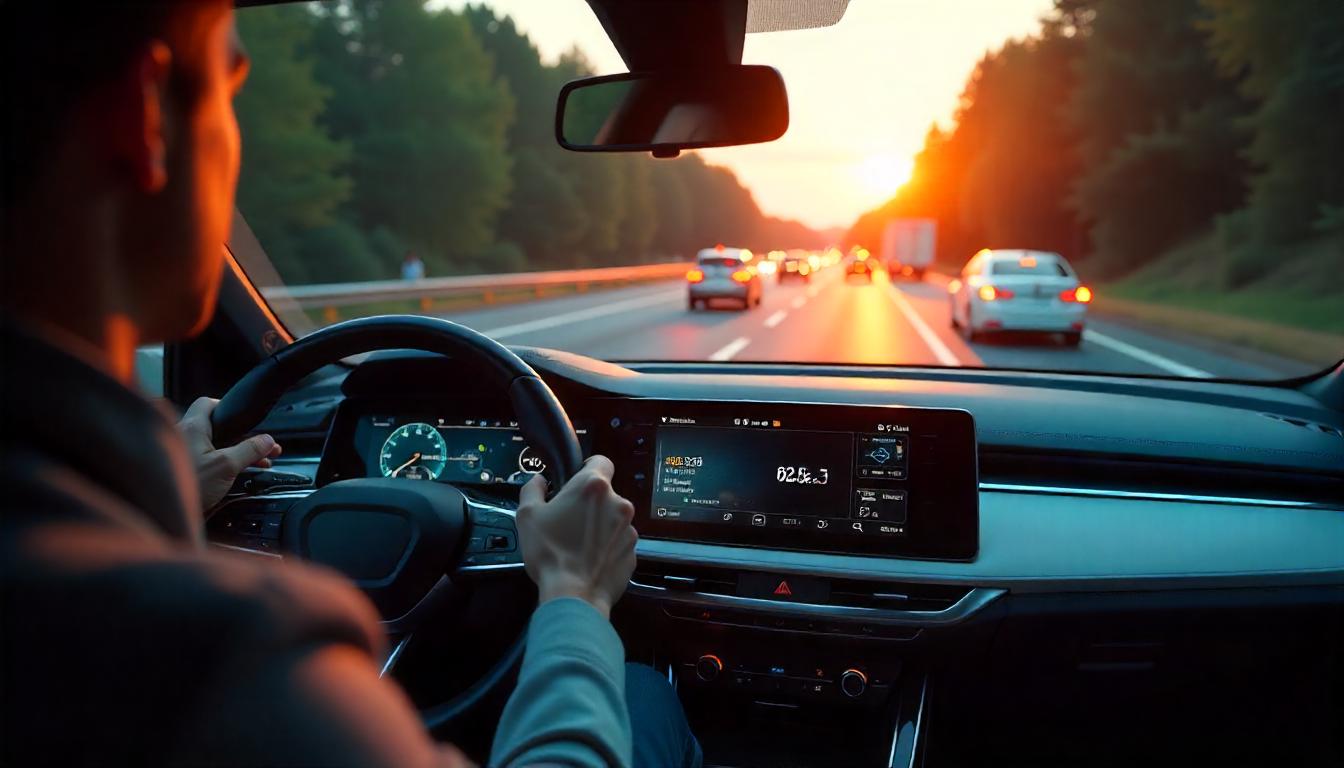Stepping out of your home and returning safely is an underrated blessing. Not everyone is lucky enough to experience it daily.
Last year, around 39,345 people died in traffic crashes in the U.S. That’s disturbing, but it’s also a reminder that driving safely is something we all need to take seriously.
Thankfully, today’s cars are getting smarter and safer. Credit goes to amazing innovations in safe-driving technology. These built-in features don’t just make your ride more comfortable, but they also actively work to prevent accidents before they happen.
Here, we’ll explore a few car safety features that are making American roads safer every day.
#1 Automatic Emergency Braking Systems
Automatic Emergency Braking, or AEB, systems are an excellent feature for preventing accidents and saving lives.
These cameras or radar sensors constantly watch the road ahead. If these sensors detect an imminent collision with a vehicle or a pedestrian, AEB steps in. The system first warns the driver. If the driver doesn’t react quickly enough, AEB automatically applies the brakes.
This technology can really help in preventing rear-end collisions. Some of the newer systems are so smart that they can even spot people walking in the dark.
That isn’t all. A new report from AAA reveals that these systems are getting better. It found that AEB systems can work at speeds as high as 62 mph. Their main goal is to either completely avoid a crash or significantly reduce its severity by slowing the vehicle down.
The National Highway Traffic Safety Administration (NHTSA) recognizes the life-saving potential of this technology. This may be why it has mandated AEB, including pedestrian detection, for all new passenger cars and light trucks by September 2029. NHTSA projects this will save at least 360 lives and prevent over 24,000 injuries annually.
#2 Video Telematics
Video telematics is similar to dashcams, but they don’t just record videos. Many use artificial intelligence (AI) to understand what’s happening on the road and in the vehicle.
These systems often feature cameras facing the road ahead and sometimes inside the car, monitoring the driver. With these features, they track speed, location, braking, and more.
One major perk? Instant feedback on your driving habits. If you brake too hard or tend to speed, the system flags it. And so, it helps you drive safer over time.
In accidents, video telematics becomes even more valuable. The footage offers clear, unbiased evidence of what really happened.
To put it another way, let’s consider the two-vehicle rollover crash that happened last month in St. Louis. First Alert 4 reports that the crash happened just before 3 A.M., and 3 people were injured in it.
Determining liability in such crashes is often challenging. But video data can help a St. Louis car accident lawyer show exactly what happened.
According to TorHoerman Law, Missouri follows a comparative negligence rule, which means your compensation is adjusted based on your share of fault. If the video shows you weren’t entirely to blame, it could directly increase what you receive.
#3 Adaptive Cruise Control
You are familiar with traditional cruise control, aren’t you? You set a speed, and the car maintains it.
But adaptive cruise control doesn’t just hold a constant speed. It also automatically maintains a pre-set following distance from the vehicle directly in front of you. This makes it a Level 1 driver assistance system, where the car helps with acceleration or braking, but the driver handles other tasks like steering.
Adaptive cruise control, or ACC, significantly enhances safety and driver comfort.
If the vehicle ahead slows down, the car with ACC will automatically reduce its speed to maintain the set distance. But if the path clears or the leading vehicle speeds up, the car will accelerate back to the preset cruise speed.
What’s more? Some advanced cruise control systems can manage the braking for you, even stopping completely and starting the vehicle again. This capability is particularly helpful on long highway journeys or in frustrating stop-and-go traffic. It reduces driving stress and helps prevent unintentional tailgating.
However, it is important to remember that ACC is a driver assistance feature, classified by NHTSA as Level 1 or Level 2 automation. This means the driver remains fully responsible for operating the vehicle and must always pay attention.
While ACC enhances comfort, which can indirectly reduce fatigue-related risks, you should not become overly reliant on the system.
The takeaway? These amazing technologies are all designed with one big goal in mind: to make driving safer and maybe even a little less stressful. They are like having an extra set of smart eyes, quick reflexes, and brilliant lighting on your side, working to help prevent accidents.
So, when you’re looking for your next car, be sure to ask about these safety features. They really do make a difference in protecting you, your passengers, and others on the road.


